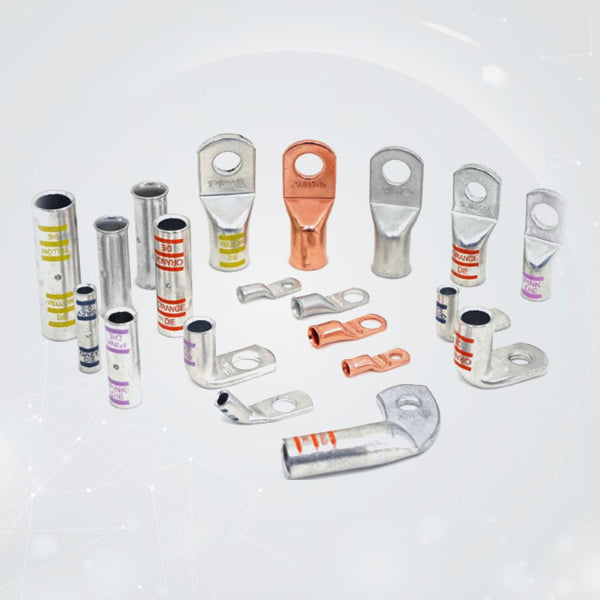
0 Gauge Lugs: Ensuring Safe and Reliable Electrical Connections in High-Current Applications
In the realm of high-current electrical systems, where the flow of electrical energy is substantial, the integrity of connections becomes paramount. The safety and reliability of these systems hinge on the ability of their components to handle the demanding conditions without compromising performance or posing hazards. 0 gauge lugs are specifically engineered to meet these challenges, providing a robust and dependable means of terminating large-gauge cables in high-current applications. This guide delves into the critical role of 0 gauge lugs in ensuring safe and reliable electrical connections, exploring their key features, applications, and best practices for installation.
Understanding 0 Gauge Lugs
To fully appreciate the significance of 0 gauge lugs, it's essential to understand the terminology and specifications involved. "AWG" stands for American Wire Gauge, a standardized system for measuring wire diameter. "0 gauge" (often written as 1/0) represents a specific wire size that is larger than 1 AWG. This larger gauge translates to a greater cross-sectional area, enabling the cable to carry higher currents with minimal resistance.
0 gauge lugs are specifically designed to terminate these 0 AWG cables. These lugs provide a secure and efficient connection point, facilitating the transfer of electrical energy between the cable and other components in the system. Typically constructed from high-conductivity copper, these lugs are engineered to minimize resistance and ensure a smooth flow of electricity.
The Importance of Safe Electrical Connections
In high-current electrical systems, the consequences of a faulty connection can be severe. Overheating, arcing, and electrical fires are significant risks associated with improperly installed or inadequate connectors. 0 gauge lugs play a crucial role in mitigating these risks by providing a robust and reliable connection that can withstand the demanding conditions.
Why 0 Gauge Lugs Are Essential for Safety and Reliability
High Conductivity: 0 gauge copper lugs are constructed from high-purity copper, a material renowned for its exceptional electrical conductivity. This high conductivity minimizes resistance, reducing energy loss in the form of heat. In high-current applications, minimizing heat generation is crucial for preventing overheating and potential fire hazards. The efficient flow of electricity also ensures that the system operates at peak performance.
Durability: High-current systems often operate in harsh environments, characterized by vibration, mechanical stress, and temperature extremes. 0 gauge lugs are designed to withstand these demanding conditions, offering exceptional durability and longevity. Their robust construction ensures that the connections remain secure and functional over extended periods, minimizing the risk of failures and downtime.
Reliability: The reliability of an electrical system is directly tied to the dependability of its connections. A failure in a connection can disrupt operations, cause equipment damage, and even create safety hazards. 0 gauge lugs, when properly installed, provide a stable and consistent connection, minimizing the risk of intermittent failures or complete connection loss. This reliability is paramount for ensuring the continuous and safe operation of high-current systems.
Key Factors for Ensuring Safe Connections with 0 Gauge Lugs
Achieving safe and reliable connections with 0 gauge lugs requires meticulous attention to detail and adherence to best practices:
- Correct Lug Sizing: Selecting the appropriate lug size is crucial. The lug must be precisely matched to the cable size to ensure optimal contact and prevent overheating. Using an undersized lug can create a bottleneck, restricting current flow and generating excessive heat. An oversized lug may not provide a secure crimp, leading to a loose connection and increased resistance.
- Proper Crimping Technique: Crimping is the most common and effective method for attaching 0 gauge lugs to cables. This process involves using a specialized crimping tool to compress the lug tightly around the cable, creating a gas-tight seal. Proper crimping technique is essential to ensure a secure and reliable connection. The crimp must be firm and uniform, with no loose strands or gaps between the lug and the cable.
- Thorough Inspection: After crimping, the connection must be thoroughly inspected to ensure that it is properly made. This includes visually checking for proper compression, no loose strands, and no signs of damage to the lug or the cable. A pull test can be performed to verify the mechanical strength of the connection.
- Use of Bare Copper Lugs When Appropriate: While tinned copper lugs offer enhanced corrosion resistance, bare copper lugs may be suitable in certain applications where corrosion is not a significant concern. However, it's crucial to consider the environmental conditions and the potential for corrosion when selecting the lug type.
Applications of 0 Gauge Lugs
The high current capacity, durability, and reliability of 0 gauge lugs make them suitable for a wide range of demanding applications:
- Automotive and Marine Battery Systems: 0 gauge Wire lugs are commonly used in automotive and marine applications to connect large battery banks, power high-output alternators, and support auxiliary power systems.
- Industrial Power Supplies: These lugs are employed in industrial settings to connect power supplies to heavy machinery, distribution panels, and other high-current equipment.
- Welding Equipment: High-amperage welding machines utilize 0 gauge lugs to handle the intense currents required for welding operations.
Technical Details Recap
- Lug Type: 0 gauge copper lugs
- Emphasis: Safety and reliability in high-current applications
By understanding the importance of 0 gauge lugs and adhering to best practices for installation, professionals and enthusiasts can ensure safe and reliable electrical connections in even the most demanding high-current applications.

